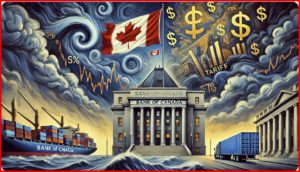You found a better rate. Maybe you’re moving. Or consolidating debt. On the surface, breaking your mortgage might look like a smart move. But before you pull the trigger, take a closer look at the penalty. In many cases, it can eat up most of the savings or potentially worse.
This guide explains how prepayment penalties work, why they differ between lenders, and how to know whether refinancing early is actually worth it.
What Is a Prepayment Penalty?
A prepayment penalty is the cost your lender charges if you end your mortgage term early. It’s their way of recovering lost interest.
In Canada, the penalty is usually whichever is higher:
- Three months’ interest
- The Interest Rate Differential (IRD)
If you have a variable-rate mortgage, you’ll typically be charged three months of interest. If you have a fixed-rate mortgage, lenders often apply the IRD, which is usually higher.
How Three Months’ Interest Works
This is the simpler of the two. You multiply your mortgage balance by your interest rate, divide by 12, and then multiply by 3.
Example:
- Mortgage balance: $400,000
- Interest rate: 4.50%
($400,000 × 4.50%) ÷ 12 × 3 = $4,500 penalty
This formula applies to most variable-rate mortgages and some fixed-rate mortgages if the IRD ends up lower.
Understanding the Interest Rate Differential (IRD)
The IRD is the more complex and potentially more expensive penalty.
There are variations to how individual lenders calculate IRD. Here’s a simple example to illustrate the concept:The IRD formula measures how much more interest you’re paying compared to what the lender could earn by lending that money today. The larger the difference between your current rate and today’s posted rate for the remaining term, the bigger the penalty.
Example:
- Balance: $400,000
- Fixed rate: 4.80%
- Time left: 2 years
- Lender’s current 2-year posted rate: 3.00%
(4.80% – 3.00%) × 2 years × $400,000 = $14,400 penalty
That’s more than triple the cost of the three-month interest formula.
Why Penalties Vary So Much
The biggest reason for the variation is how lenders calculate IRD. Some banks use their inflated posted rates in the formula, which increases the penalty. Others, like many monoline lenders (non-bank lenders who work with mortgage brokers), use discounted rates that better reflect the market.
As a result, two homeowners with similar mortgages can face very different costs, depending on which lender they chose.
When Breaking Your Mortgage Makes Sense
Let’s say you want to refinance to a lower rate. Here’s how to do the math.
Scenario:
- Balance: $400,000
- Current rate: 4.80%
- Remaining term: 3 years
- Available new rate: 3.50%
- Penalty: $12,000
- Interest savings at new rate: $16,200 over 3 years
In this case, you come out ahead by $4,200 after covering the penalty.
But if the numbers were reversed…say the penalty was $16,200 and the savings only $12,000, you’d be locking in a loss.
How to Lower the Penalty or Avoid It
There are ways to reduce the impact of a prepayment charge:
Ask for details upfront Before signing a mortgage, ask how the lender calculates penalties. Make sure you understand the math.
Choose lenders carefully Monoline lenders often use fairer IRD formulas than the big banks.
Consider variable rates They usually come with smaller penalties, just three months’ interest.
Explore blend-and-extend options Some lenders will let you blend your current rate with a new one and avoid breaking the mortgage entirely.
Use your porting option If you’re moving homes, some lenders allow you to transfer your mortgage to a new property without a penalty.
Time your break strategically As your maturity date gets closer, the IRD penalty often shrinks. Waiting a few months can make a big difference.
The Bottom Line
A lower rate or better opportunity can be tempting. But breaking your mortgage isn’t always a financial win. The penalty can erase much of the benefit if you’re not careful.
Before making a decision, calculate both the penalty and the long-term savings. If you’re not sure, work with a mortgage broker who can run the numbers and help you choose the best path forward.
By the team at Breaking Bank






